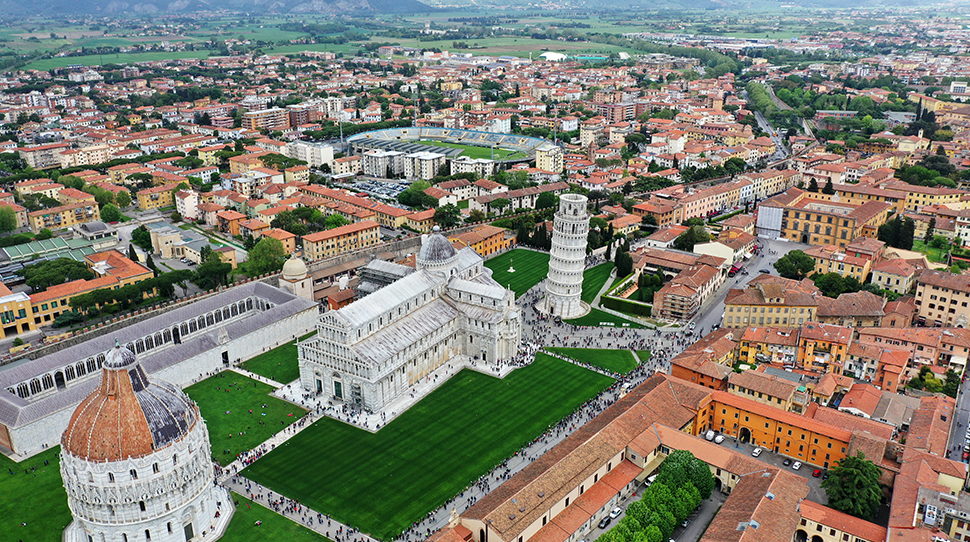

Cypress trees, Chianti wines and centuries’ worth of artistic masterpieces all conjure up images of Tuscany. There’s much to explore in this central Italian region that’s dense with both everyday wonders and World Heritage Sites. Tuscany’s capital, Florence, tends to attract the most tourists, but even its tiniest hamlets hold postcard-worthy treasures.
Here are 10 of Tuscany’s must-see attractions.
Piazza dei Miracoli, Pisa
Quick: What are Italy’s three most recognizable icons? Chances are the Leaning Tower landed somewhere in your mental lineup. But the other structures surrounding it — Pisa’s cathedral, monumental cemetery, baptistery, Sinopie Museum and the Opera del Duomo museum — are just as worthy of a visit. Collectively, these architectural wonders make up the Piazza dei Miracoli, or “Square of Miracles,” an apt nickname coined by Italian poet Gabriele d’Annunzio.
A practical note: Climbing the Leaning Tower’s 251 steps takes about 30 minutes. Book ahead here for timed entry.
Lucca walls
Both history buffs and bicycling enthusiasts will want to add the Lucca walls to the top of their Tuscany lists. Spanning more than two and a half miles — among the longest in Europe — they were originally built for defensive purposes and underwent various expansions from ancient Roman times up until the 17th century.
It wasn’t until the 19th century that architect Lorenzo Nottolini was commissioned to turn part of the walls into a park. Today, the bastions are busy hubs of activity and bike rides, and they have even hosted music legends (the Rolling Stones among them) during the popular Lucca Summer Festival.
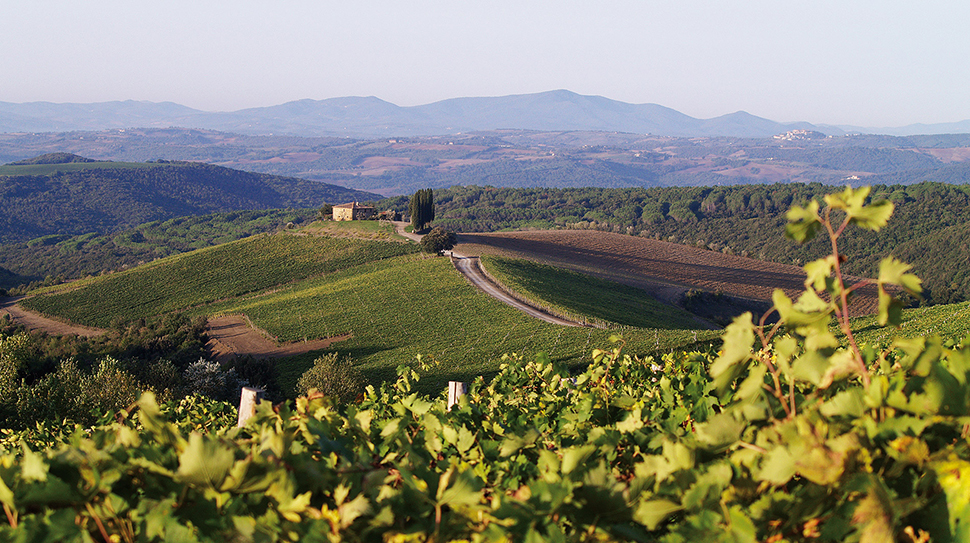
Wineries
“Chianti” gets thrown around as a catch-all term for Tuscan red wines, but it’s not accurate. Chianti and Chianti Classico are two distinct DOCG (Denomination of Controlled and Guaranteed Origin) wines with their own production zones and governing consortia. “Chianti” can, however, be used as an umbrella term for the region crossing the Florence, Arezzo and Siena provinces, where both types of wine are produced.
Geographically, the limits of Chianti are nebulous, but the experience of sipping Sangiovese is an essential one, best if paired with a cheese board and a lush landscape. To pick a tasting spot, browse through verified DOCG producers and wineries on the websites of the Chianti and Chianti Classico consortia here and here.
Another Tuscan wine made from Sangiovese grapes is the lesser-known Brunello di Montalcino. Castiglion del Bosco in Montalcino is one of the oldest producers of the full-bodied, tannic red. Stay at the Forbes Travel Guide Five-Star Rosewood Castiglion del Bosco for an immersive wine experience. The estate offers 153 acres of vineyards, an on-site winery with tastings and tours, and a harvest event that takes place every September.
Arezzo antiques market
Traveling magpies will take delight in a visit to Arezzo’s antiques market, the oldest in Italy. Held every first Sunday of the month (and the Saturday before, whenever it may fall), the sprawling fair features some 500 exhibitors, hordes of boisterous bargainers and colorful tchotchkes brought in from all over the Boot.
Beyond the outdoor stalls, which are dispersed over Piazza San Francesco, Piazza Grande and the Logge Vasari — settings you may recognize from the film Life Is Beautiful — the area is peppered with brick-and-mortar antiques shops and eateries that stay open on non-market days.
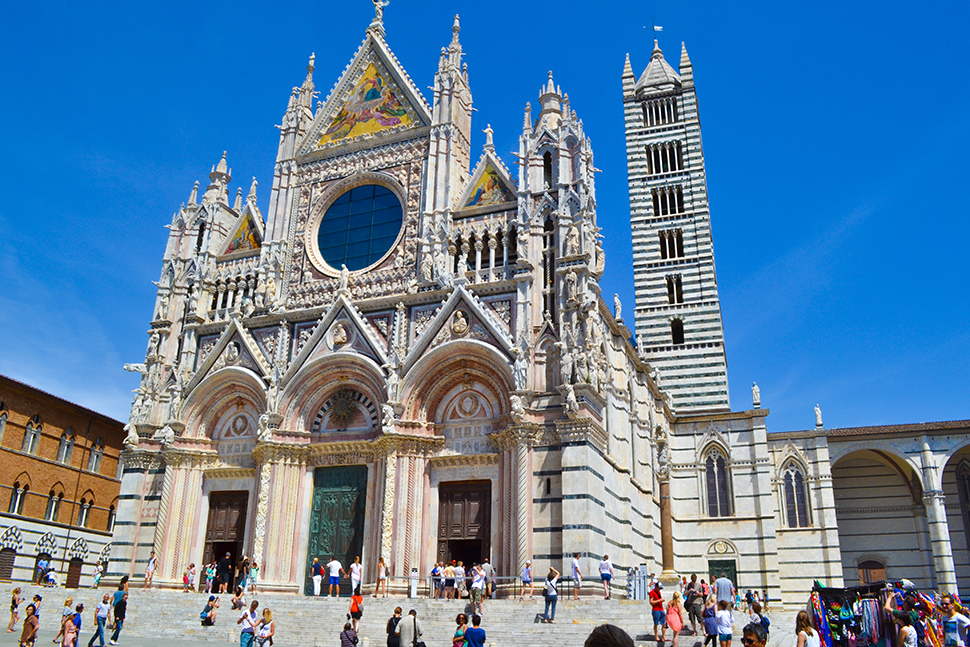
Siena Cathedral
Aesthetic marvels compete for your attention as soon as you set foot inside the Cathedral of Santa Maria Assunta. Take your time: tilt your gaze toward the marble mosaic inlay floors, keep it level and look upon the Nicola Pisano-carved pulpit or direct it upward to the remarkably intricate dome.
Just be sure not to skip over the Piccolomini Library, which houses a bordering-on-Technicolor fresco cycle by Pinturicchio depicting scenes from the life of Pope Pius II.
Carrara marble basins
If you’ve ever felt puzzled by the fuss over Carrara marble countertops, head straight to the source and you’ll start to understand. (Michelangelo, for one, famously carved his David from Carrara marble.)
Fantiscritti, Torano and Colonnata are the three main marble mining basins in the area. While parts of each are open for independent exploration, if you’re curious about how extraction works and want to get knee-deep in the quarries, you’ll need to book a tour with an authorized guide.
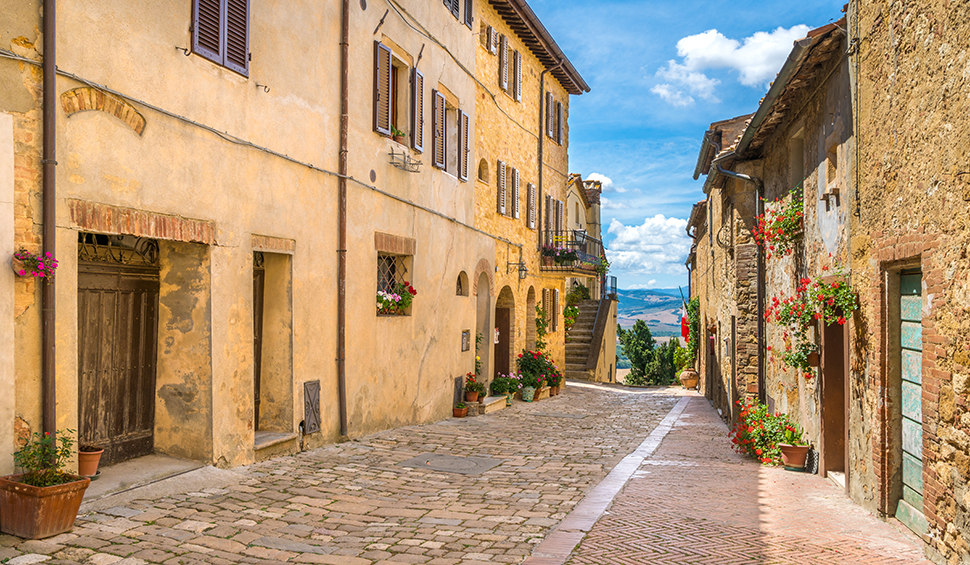
Palazzo Piccolomini, Pienza
This extraordinary Renaissance palazzo seems plucked from a dream. Part of its appeal is its symbiotic relationship with the surrounding landscape (with the views over the Val d’Orcia countryside and Monte Amiata to prove it).
That harmony is unsurprising when you consider the history of its host town: Pienza was planned as an “ideal Renaissance city” by Pope Pius II, who’s also the building’s namesake (he was born Enea Silvio Piccolomini). The trademark Renaissance characteristics of balance and proportion keep everything feeling fairytale-like, particularly the roof garden.
Hermitage of Montesiepi and the Abbey of Saint Galgano
In Chiusdino, which sits about 20 miles from Siena, there’s a monumental complex with a sword-in-the-stone backstory that will make you forget about King Arthur.
Legend has it that 12th century noble Galgano Guidotti experienced visions of the archangel Michael that eventually led him to follow Christ and live as a hermit on Montesiepi. As a dramatic symbol of renouncing his former life and riches, Galgano struck a stone with his sword. Though some versions of the story say he was hesitant to surrender his possessions and argued with Michael about how it would be more challenging than “splitting a stone,” only to accomplish it effortlessly.
The sword in the stone is still here today, alongside the evocative remains of a Romanesque abbey, drawing in bucket-list explorers and pilgrims of all types.
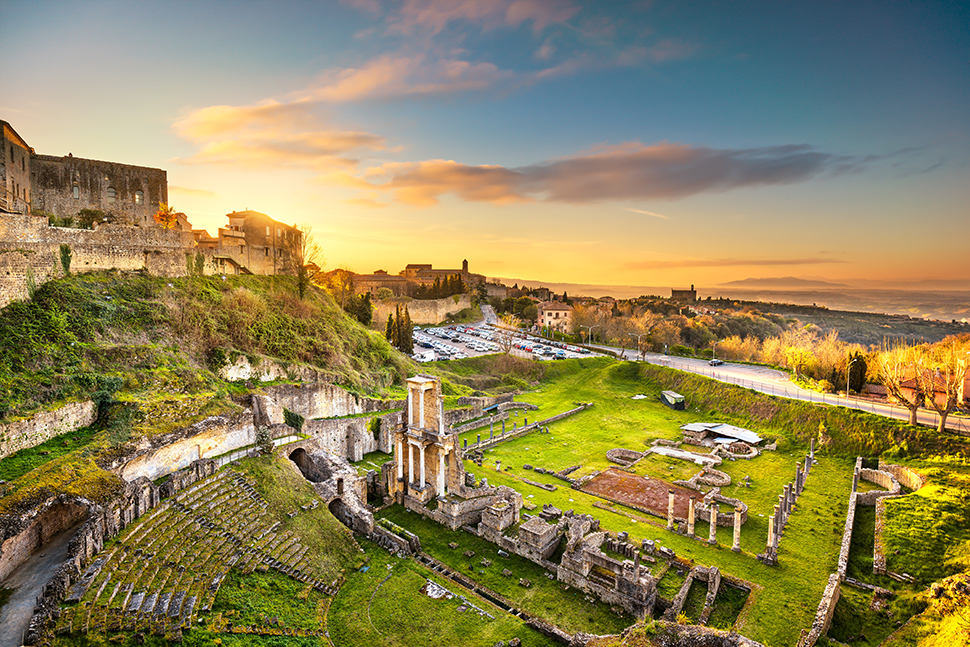
Etruscan sites, Volterra
Since the blockbuster “Twilight”book series, which set some of its scenes in Volterra, the moody town has seen a spike in interest for vampire-related activities and tours. But there’s a much more interesting reason to visit: Volterra was a busy settlement site of a mysterious population, the Etruscans, whose civilization reached its height in the 6th century BCE.
The enterprising Etruscans eventually incorporated all of modern-day Tuscany into their domain. But Volterra in particular is home to fascinating traces of their past: a Roman amphitheater, an acropolis holding the ruins of two temples, a necropolis and the Porta all’Arco, a giant gateway to the ancient city.
Clustered within easy walking distance of each other, the monuments are further contextualized if you visit the nearby Guarnacci Etruscan Museum.
Uffizi Gallery, Florence
We focused this roundup on must-sees outside the Tuscan capital, but there’s simply no way to skip over the Renaissance city’s sublime art repository. Rattling off the masters on display reads like a crash course in Italian genius: Botticelli, Michelangelo, Titian, Raphael, Caravaggio and da Vinci, to start. Plus, the building itself is a work of art, designed by the father of art history, Giorgio Vasari, with vaunted views over the Arno River.
Reserving tickets online ahead of time is always advisable through the museum’s website.
